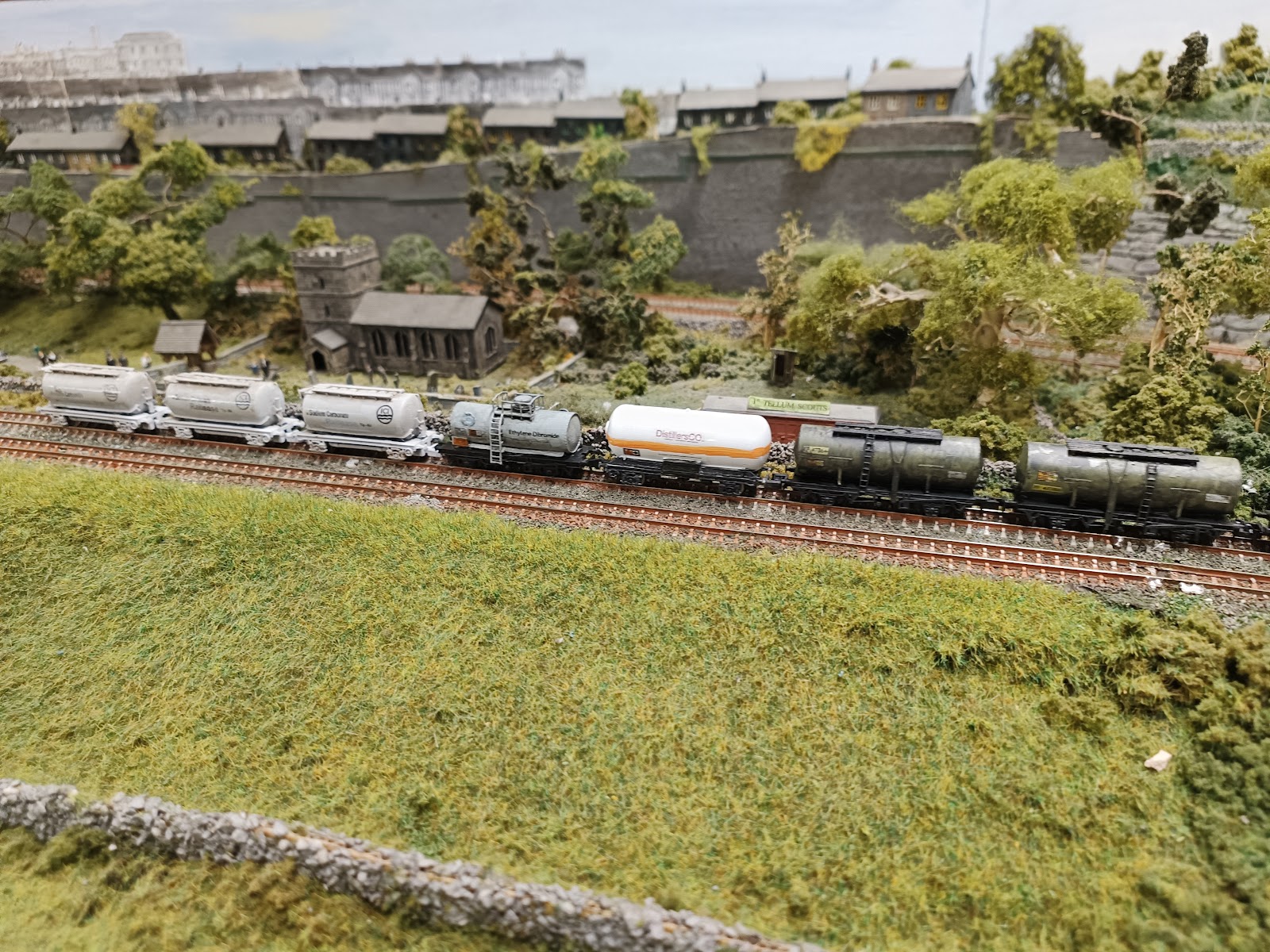Various tank wagons
I am a chemist by profession, and so the transport of chemicals by rail is of interest.
In fact I wrote an article on the topic, see here.
Nitrogen Liquors
The appeal for these is in the name, which makes no sense at all if you are a chemist. They actually contained ammonium nitrate, which is a fertiliser used to put nitrogen in soil, which will be where the name comes from, presumably a solution in water, that is likely both hot - given the wagons are lagged - and very concentrated.
Images of the prototype can he found here.
They are so dirty it is not possible to tell the original colour, but I am guessing green?
One end has four flanges; these would have been to allow the contents to be heated using steam. They were printed separately. The wagons have channels down the sides to catch spills. i guess this is to ensure the solution down not end up between the rails, where it could mix with oil to create an explosive mixture.
Carbon Dioxide
By contrast, this is a pretty clean white wagon. Carbon dioxide is transported as a liquified gas, and is a far cleaner chemical to handle.
The origin of the Distillers company name is distilling Scotch whisky (the Scotch Distillers' Association), and it may be that the carbon dioxide was a by-product of the brewing industry.
Prototype here.
My first attempt turned out a little over scale; above is the updated version. The chassis is, I think, a cement wagon; it has the wheels right at the ends, as per the prototype.
Ethylene dibromide
Ethylene dibromide (or 1,2-dibromoethane) was used as an additive in leaded petrol to stop the lead coating the engine parts. It is a dense liquid, so the tank is that much smaller. This means there is space for the rails on top, giving it a bit of an American look.
Again, it is on a Peco chassis.
Tip-air
Described in a previous post (and technically hoppers as they carry a powder).
Vinyl chloride
A bogie tank wagon.
Vinyl chloride in the raw material for making poly(vinyl chloride), better known as PVC, and is made in huge quantities. It is a gas, hence the orange band and relatively clean wagon. It has a platform at one end. It is possible it is filled and emptied from there. The rails are part of the 3d print; we will see how long they survive.
The bogies are from Graham Farish.
Ammonia
Similar to before, at least superficially, and on the same bogies.
I made eight of these to give a very distinctive train.









Comments
Post a Comment